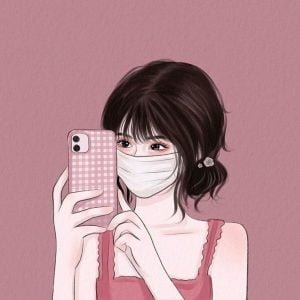Bamboo fabric is made from fibers that have been harvested from bamboo plants. The resulting fabric is usually soft, cozy, and absorbent, and can be used to make shirts, bedsheets, socks, towels, and reusable diapers.
However, large-scale bamboo cultivation practices are associated with a host of environmental issues, and the process used to transform bamboo fibers into fabric is chemically-intensive.
How Is Bamboo Fabric Made?
It starts with bamboo plants, which are typically grown in China, Taiwan, Japan, and other parts of Asia. Bamboo is a type of grass that grows rapidly – as much as 3 feet per day, to a total height of 75-100 ft. There are about 1,400 species of bamboo, but the most common subspecies used for fabric is Moso bamboo (Phyllostachus edulis).
Mechanically-Processed Bamboo Fabric
The bamboo is harvested by cutting, and then it is processed either mechanically or chemically to turn into fiber. Mechanically-processed bamboo is known as bamboo linen (or bast fiber) and it is made using the same process as flax and hemp linen. However, because it has an uncomfortably rough texture and is labor-intensive (and thus expensive) to produce, it comprises only a minuscule portion of the bamboo fabric market.
Chemically-Processed Bamboo Fabric
Far more common is chemically-processed bamboo, which is made by dissolving plant fibers in a mixture of sodium hydroxide (also known as lye or caustic soda) and carbon disulfide. The resulting syrupy mixture is extruded through tiny holes into a solution of sulfuric acid, which congeals the fibers and allows them to be woven into fabric. This is the exact same process that’s used to make viscose (also called rayon) from other plant-based sources, such as wood chips and eucalyptus.

What Is Bamboo Fabric’s Environmental Impact?
For a number of years, mainly in the mid-2000s, bamboo was hailed as a miracle material. There is some truth to it. Bamboo’s growth rate is remarkable, and cutting it does no greater damage to the plant than mowing does to a lawn.
Scientific American reported that “bamboo can be cultivated with little to no fertilizer, pesticides, heavy harvesting machinery or irrigation, and bamboo root systems can protect steep banks from erosion.” Because bamboo has such deep root systems and is merely cut, the soil remains undisturbed by machinery during harvesting. Bamboo absorbs five times more carbon and produces 35 times more oxygen than a similar-sized stand of trees
Problems with Cultivation
Unfortunately, when something sounds too good to be true, it often is. In China, the cultivation of Moso bamboo has rapidly increased since 2000, leading many farmers to clearcut naturally forested land to make room for new bamboo farms.2 This destroys biodiversity and releases significant amounts of carbon. And while bamboo doesn’t require large inputs of fertilizer or pesticides to grow, there’s nothing preventing farmers from adding them in order to boost growth, yield, and profits, which can lead to a host of environmental problems.3
A Toxic Production Process
Then there’s the problem with producing the fabric, which is where bamboo’s environmental credibility rapidly erodes. The chemical process using carbon disulfide is extremely toxic. Chronic exposure to carbon disulfide causes nervous system and reproductive system damage and has been linked to a host of health problems.
Ethical fashion site Good On You reports that roughly half of the hazardous waste from rayon production (including bamboo) “cannot be recaptured and reused, and goes directly into the environment.” Chlorine compounds and VOCs are released into the atmosphere, and effluent from bleaching facilities is dumped into waterways, harming aquatic life.
By the time processing has occurred, the resulting fabric is not really made of bamboo anymore.
Similarly, any claims that a fabric retains antimicrobial properties from the bamboo plant are also false, according to the FTC.
How Does Bamboo Compare to Other Viscose Fabrics?
Bamboo-based viscose (or rayon) is preferable to conventional viscose, which uses wood pulp that could be sourced from unsustainably harvested trees and even ancient forests.5 Both are fully biodegradable, however, as long as further toxic dyes have not been added, which gives them a slight advantage over petroleum-based synthetic fabrics.
A better option is to seek out bamboo fabric that’s been made using the Lyocell process (brand name Tencel). This closed-loop production system uses fewer toxic chemicals and has almost no waste byproducts, although it typically uses eucalyptus wood. Bamboo fabric that has been made by the Lyocell process is branded as Monocel.
What Alternatives Exist to Bamboo Fabric?
If you’re set on bamboo, the Natural Resources Defense Council recommends choosing bamboo linen in place of viscose. You can look up vendors of organic bamboo linen on the Global Organic Textile Standard Public Database. If possible, opt for linen that has been “dew-retted”, as opposed to water- or chemical-retted. (This is the process by which fibers are separated from the stem of the bamboo plant. Dew-retting is slower, but uses less energy and water.) Always choose naturally-dyed linen.
Organic cotton and hemp are two other decent substitutes for bamboo. While bamboo as a plant is far more sustainable than cotton, its fabric manufacturing process is so taxing on the environment that it makes organic cotton look much better; hemp, on the other hand, is already a stellar option to begin with, requiring very little water and growing at a quick rate.


